Floating Solar Farms Technology: Science & Innovation Explained
Category: Renewable Energy
Dive into Floating Solar Farms Technology: Innovation Meets Renewable Energy
If you’re an electrical engineer or a renewable energy enthusiast eager to understand the breakthrough technology behind floating solar farms, you’ve landed in the right place. Traditional solar farms consume large areas of land, often leading to conflicts with agriculture or natural ecosystems, and this poses a persistent challenge for scalable solar deployment. Floating solar farms—or "floatovoltaics"—offer a cutting-edge solution that places photovoltaic panels on water bodies, maximizing space efficiency and boosting energy yield.
You might have encountered bits and pieces of floating solar technology but remain unsure about its design intricacies, scientific principles, innovative materials, and challenges to deployment. Perhaps you want a structured yet accessible technical deep dive covering both foundational concepts and the latest advancements. This post uses a layered approach tailored for curious beginners and electrical engineers alike, emphasizing core technology, engineering challenges, performance factors, and future prospects.
Unlike other articles that just scratch the surface, here you will find a logically-flowing, comprehensive exploration uniting science and engineering innovation behind floating solar farms. From the rationale to design, hydrodynamics to energy harvesting benefits, this post aims to clarify complex ideas and inspire further exploration into this promising renewable energy frontier. Read on to transform your understanding with clear insights and practical knowledge.
- Dive into Floating Solar Farms Technology: Innovation Meets Renewable Energy
- Overview of Floating Solar Farms: Innovation on Water
- Key Components and Design of Floating Solar Systems
- Scientific Principles and Energy Generation of Floating Solar Farms
- Hydrodynamics and Environmental Interactions of Floating Solar Systems
- Advantages Over Land-Based Solar Farms
- Engineering Challenges and Solutions in Floating Solar Farms
- Integration with Existing Energy Systems and Grid
- Economic and Environmental Impact Assessment of Floating Solar Farms
- Recent Innovations and Future Trends in Floating Solar Farms Technology
- Global Case Studies and Deployment Examples of Floating Solar Farms
Overview of Floating Solar Farms: Innovation on Water
Floating solar farms, also known as floatovoltaics, are photovoltaic systems installed on the surface of water bodies such as reservoirs, lakes, and irrigation canals. Instead of occupying precious land, these solar panels are mounted on buoyant platforms that float atop water, combining solar energy generation with efficient space utilization. This innovative approach leverages the natural cooling effect of water to improve panel efficiency and reduces water evaporation, offering dual environmental benefits.
The conceptual roots of floating solar date back to the early 2000s when researchers began exploring water-based solar installations to address land scarcity and enhance energy yield. Since then, rapid technological advancements and declining photovoltaic costs have propelled their commercial deployment worldwide. Countries like China, Japan, India, and South Korea are leading the global uptake, with installations amounting to several gigawatts—signaling a significant shift in renewable energy infrastructure.
Floating solar farms matter in today's renewable energy landscape for several reasons:
- Land Conservation: They alleviate pressure on arable land and urban spaces, crucial for densely populated regions.
- Increased Efficiency: Water's cooling effect reduces solar panel temperatures, improving energy conversion rates by up to 10%.
- Environmental Synergies: They help reduce water evaporation and can coexist with aquaculture or hydropower systems.
- Scalability and Flexibility: Floating arrays can be deployed on existing water bodies without major ecological disruption.
As global energy demand rises and land-use conflicts intensify, floating solar farms represent a strategic innovation that enhances renewable energy capacity while balancing ecological and societal needs. Understanding their development and deployment sets the stage for deeper exploration into their design, engineering challenges, and performance optimization.
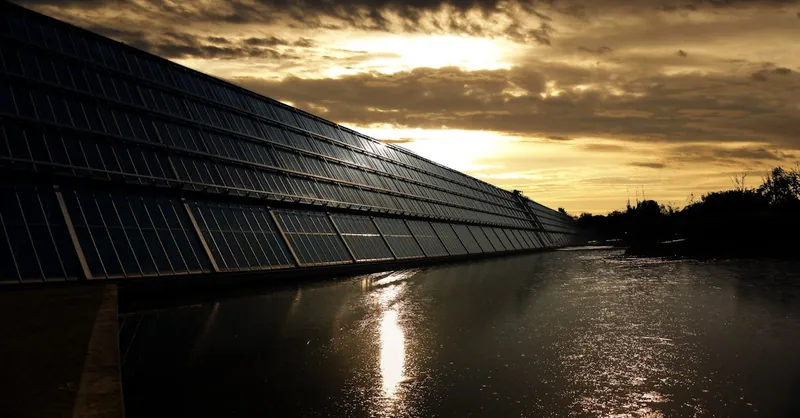
Image courtesy of Pixabay
Key Components and Design of Floating Solar Systems
Floating solar systems integrate several critical structural and technological elements to ensure stability, durability, and optimal energy production on water surfaces. Central to these systems are the floats, anchoring mechanisms, and modular photovoltaic (PV) panels, each engineered to address the unique challenges posed by aquatic environments.
Float Structures: The Foundation of Floatovoltaics
The floats serve as buoyant platforms that securely support the solar panels above the water. Typically made from high-density polyethylene (HDPE) or UV-resistant polymer composites, these floats are designed for corrosion resistance, long-term durability, and impact tolerance. Innovative float designs often incorporate modular interlocking units, which facilitate scalable system expansion, ease of installation, and maintenance access. Their shape and size are optimized to provide maximum stability against wind, waves, and water currents, while minimizing shadowing on the panels to preserve energy generation efficiency.
Anchoring and Mooring Systems: Stability in Dynamic Water Conditions
To keep floating solar arrays securely positioned, effective anchoring and mooring systems are indispensable. These systems typically utilize a combination of:
- Concrete or steel anchors resting on the waterbody bed,
- Flexible mooring lines or cables linking the floats to anchors, and
- Shock absorbers or tensioning devices that allow slight movement to adapt to changing water levels and weather conditions without compromising structural integrity.
Advanced anchoring designs consider local bathymetry, water depth variations, and environmental loading, ensuring that the solar farm remains stable and aligned for maximum solar exposure.
Modular PV Panels: Efficiency Meets Adaptability
Floating solar arrays employ modular photovoltaic panels designed specifically or adapted for aquatic deployment. These panels are encapsulated with waterproof frames and enhanced sealing technologies to prevent moisture ingress and corrosion. Using high-efficiency monocrystalline silicon cells with anti-reflective coatings, the panels capitalize on the cooling effect of water to maintain superior performance, often exceeding land-based solar efficiencies in identical conditions. Their modular configuration enables rapid scaling, replacement, and system upgrades while optimizing electrical connectivity and safety standards for wet environments.
Innovative Materials Enhancing Durability and Performance
Material innovation is pivotal for the success of floating solar technology. Beyond traditional plastics and metals, newer composite materials incorporating nano-coatings provide improved hydrophobicity, UV resistance, and biofouling mitigation—reducing maintenance needs and extending lifespan. Additionally, corrosion-resistant alloys and reinforced polymers ensure structural longevity even in harsh or saline water conditions, such as reservoirs or coastal areas. These material advancements directly contribute to increased reliability, lower operational costs, and sustained energy output in floating solar installations.
Together, these components and design innovations enable floating solar farms to thrive as a resilient, efficient, and scalable solution in the renewable energy portfolio, making optimal use of water surfaces while circumventing land usage constraints.

Image courtesy of Pixabay
Scientific Principles and Energy Generation of Floating Solar Farms
At the core of floating solar farms lies the photovoltaic (PV) effect, where sunlight is converted directly into electricity through semiconductor materials—typically silicon cells—embedded in the solar panels. When photons strike these cells, they excite electrons, generating an electric current. While this fundamental process is identical to land-based solar systems, floating solar panels benefit from unique environmental conditions that enhance their energy generation efficiency.
Impact of Water Cooling on Panel Efficiency
One of the most significant scientific advantages of floatovoltaics is natural water cooling. Solar panels typically experience efficiency losses as their temperature rises, with performance dropping approximately 0.4% to 0.5% for every degree Celsius increase above 25°C. Floating panels, suspended over water, leverage the high heat capacity and evaporative cooling properties of water bodies, which effectively dissipate excess heat from the panel surface.
This cooling effect results in:
- Lower operating temperatures compared to terrestrial installations,
- Increased electrical output, often by 5-10% depending on climate and water temperature,
- Enhanced lifespan due to reduced thermal stresses on electronic components.
Such temperature regulation is particularly impactful in hot climates where land-based panels often underperform.
Irradiance Considerations Unique to Floating Platforms
Floating solar farms also experience specific irradiance dynamics distinctive from ground-mounted systems. The reflective surface of water can influence solar radiation in two key ways:
- Albedo Effect: Water can reflect a portion of the sunlight upward, which may increase irradiance incident on the underside of tilted panels or affect array spacing to reduce mutual shading.
- Light Diffusion and Absorption: Water bodies can modulate the spectral quality and intensity of sunlight, especially under varying weather conditions or turbidity levels, impacting the effective solar energy available to panels.
Floating arrays are often oriented and spaced to optimize these irradiance patterns, balancing maximum solar exposure with structural stability on water. Additionally, designers consider the potential for panel shading from waves or watercraft and adapt configurations accordingly.
Together, the synergistic cooling benefits and irradiance factors make floating solar farms a scientifically robust and often more efficient alternative to conventional solar installations. Understanding these principles helps engineers optimize system layouts and anticipate performance gains, making floatovoltaics an increasingly attractive technology in renewable energy landscapes.

Image courtesy of Jeremy Bishop
Hydrodynamics and Environmental Interactions of Floating Solar Systems
Floating solar farms operate at the complex interface between technology and aquatic environments, where understanding hydrodynamics—the behavior of water in motion—is crucial to system stability and energy performance. These systems must contend with continuous forces from waves, wind, and water currents that influence their mechanical resilience and the uniformity of solar energy capture.
Wave and Wind Effects on Floating Solar Stability
The dynamic nature of water surfaces means floating solar arrays are exposed to wave action induced by wind and environmental factors. While small waves can cause gentle oscillations that the modular floats absorb, larger waves and swells generate forces that impact the platform’s tilt and alignment, potentially affecting panel orientation and shading patterns. To mitigate these effects, float designs incorporate:
- Low-profile, hydrodynamic shapes that reduce drag and minimize uplift,
- Flexible mooring systems that allow limited movement without structural damage,
- Damping mechanisms to absorb wave energy and prevent resonance.
Wind loads also play a significant role, exerting pressure on the elevated panels. Engineering calculations integrate wind drag coefficients specific to solar panel arrays, ensuring the anchoring system counters uplift and shear forces while maintaining optimal tilt angles for irradiance capture.
Currents and Their Influence on Energy Yield and Durability
Water currents—driven by inflows, outflows, or tidal forces in certain reservoirs—impact floating solar arrays by generating lateral movement and varying water pressures on floats and mooring lines. These currents can:
- Cause gradual drift, necessitating robust but adaptable anchoring solutions,
- Induce wear and fatigue on mechanical parts through cyclic loading,
- Affect natural cooling efficiency by altering water circulation beneath panels, which may influence thermal regulation and thus energy output.
Site-specific hydrodynamic modeling is critical to optimize array layout and anchoring architecture, balancing flexibility and stability to maximize long-term operational performance.
Environmental Interactions and Ecosystem Considerations
Beyond mechanical stability, floating solar farms impact aquatic ecosystems through shading and alterations to water surface and temperature dynamics. Moderate shading can benefit some aquatic species by reducing harmful algal blooms and controlling water temperature fluctuations. However, designers must carefully evaluate:
- Light penetration changes affecting photosynthetic aquatic organisms,
- Oxygen and nutrient fluxes modulated by altered water circulation,
- Potential biofouling, where organisms attach to floats or panel undersides, influencing maintenance needs and hydrodynamic profiles.
In summary, comprehensively understanding the hydrodynamic forces and environmental interactions allows engineers to design floating solar systems that are both structurally resilient and ecologically harmonious. Optimizing for these factors is essential to ensuring stable energy yields and sustainable deployment in diverse aquatic settings worldwide.
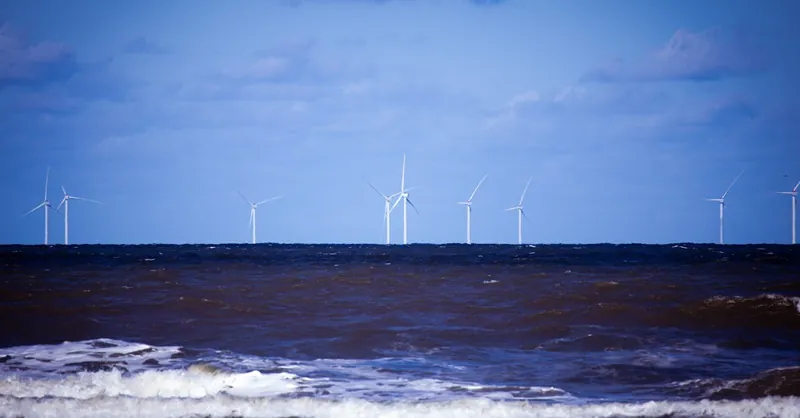
Image courtesy of Patrick
Advantages Over Land-Based Solar Farms
Floating solar farms present several compelling advantages compared to traditional land-based solar installations, addressing critical challenges related to land use, climate impact, and environmental sustainability. By leveraging water surfaces such as reservoirs, lakes, and irrigation ponds, floatovoltaics optimize renewable energy generation without competing for terrestrial space.
Land Conservation and Optimal Space Utilization
One of the primary benefits of floating solar technology is its ability to preserve valuable land resources. In densely populated or agriculturally intensive regions, land availability for solar farms is often limited or ecologically sensitive. Floating solar arrays:
- Eliminate the need to clear large land areas, preventing habitat disruption and soil degradation.
- Enable the dual use of water bodies, conserving surrounding ecosystems and farmland.
- Encourage solar deployment in urban or peri-urban environments where water reservoirs are available, reducing energy transmission losses by locating generation closer to demand centers.
This land-saving advantage is especially critical as global renewable energy capacity scales to meet ambitious decarbonization goals.
Enhanced Efficiency Through Natural Water Cooling
Floating solar panels benefit from the thermal regulation provided by the underlying water, which leads to significant efficiency improvements over land-based systems. Reduced operating temperatures translate into:
- Increased energy yield, often between 5% to 15% depending on climate conditions,
- Lower degradation rates of PV cells, extending panel lifespan and reducing replacement costs,
- Improved performance during peak summer months when terrestrial solar farms typically suffer from heat-induced output decline.
This natural cooling mechanism makes floating solar an attractive option in hot and arid regions where high panel temperatures can severely limit solar power generation.
Reduced Water Evaporation
Deploying solar panels over water surfaces offers the added hydrological benefit of curtailing evaporation losses from reservoirs and man-made lakes. This is particularly valuable in arid and drought-prone areas where water conservation is critical. The shading effect of floating arrays:
- Reduces solar radiation reaching the water surface, lowering evaporation rates by up to 70% in some cases,
- Supports water resource management strategies by preserving reservoir volumes for agriculture, drinking water, or hydropower,
- Mitigates water temperature fluctuations, enhancing aquatic ecosystem stability.
Thus, floating solar farms contribute directly to integrated water-energy sustainability objectives.
Dual-Use Water Body Management and Synergistic Benefits
Beyond energy generation, floating solar installations enable multi-functional use of water bodies, creating opportunities for synergistic renewable energy integration and ecological management. For example:
- They can be co-located with hydropower plants, utilizing existing infrastructure for grid connection and potentially increasing overall renewable energy output,
- The shading and reduced wind exposure can promote healthier aquatic environments and improve water quality,
- Integration with aquaculture practices is possible, providing habitat benefits while optimizing land-water resource utility.
These dual-use advantages maximize economic and environmental returns, underscoring floating solar's role as an innovative, space-efficient renewable technology.
In summary, the combination of land conservation, enhanced panel efficiency via cooling, decreased water evaporation, and flexible water body management provides floating solar farms with distinct competitive edges over land-based solar arrays. These benefits make floating solar a strategic technology for expanding clean energy capacity while addressing ecological and societal constraints, especially in regions challenged by land scarcity and water stress.
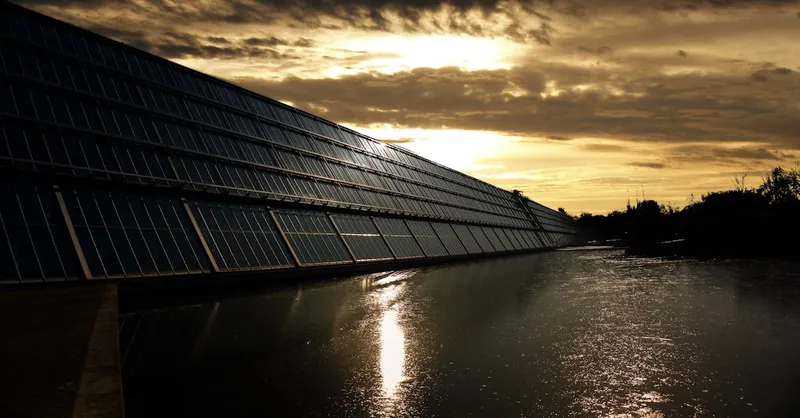
Image courtesy of Pixabay
Engineering Challenges and Solutions in Floating Solar Farms
While floating solar farms offer impressive benefits, engineering these systems to perform reliably over time on water surfaces involves overcoming several critical challenges related to corrosion, biofouling, maintenance, and electrical safety. Addressing these issues through innovative solutions is essential to achieving durable, efficient, and safe floating solar installations.
Corrosion Resistance in Aquatic Environments
One of the foremost challenges in floating solar engineering is corrosion, primarily caused by prolonged exposure to moisture, UV radiation, and, in some cases, saline or chemically treated water. Metal components such as anchors, mooring cables, bolts, and panel frames are particularly vulnerable. Effective strategies to mitigate corrosion include:
- Use of corrosion-resistant materials such as stainless steel, anodized aluminum, and marine-grade alloys for structural elements.
- Advanced protective coatings, including epoxy and polymeric nanocoatings, which create waterproof barriers on metal surfaces to prevent oxidation and degradation.
- Composite materials for floats and panel frames that inherently resist rust and chemical attack, enhancing system longevity.
These materials and coatings not only safeguard structural integrity but also reduce maintenance frequency and lifecycle costs.
Managing Biofouling and Its Impact
Biofouling, the accumulation of aquatic organisms like algae, barnacles, and mollusks on submerged surfaces, poses another major engineering challenge. Biofouling increases system weight, affects hydrodynamic performance, obstructs cooling water flow beneath panels, and complicates maintenance. Solutions to control biofouling encompass:
- Anti-fouling coatings that inhibit organism attachment through non-toxic, hydrophobic, or self-cleaning surface treatments,
- Ultrasonic antifouling systems deployed on floats to deter biofilm formation via high-frequency sound waves,
- Regular cleaning protocols using remote-operated vehicles or robots to remove fouling without disrupting operation.
Mitigating biofouling improves energy efficiency, reduces mechanical strain on mooring systems, and extends component service lives.
Maintenance Under Harsh and Remote Conditions
Floating solar farms often operate in variable and sometimes harsh aquatic environments—subject to strong winds, waves, temperature fluctuations, and remote locations that hinder routine servicing. To tackle these operational challenges, engineers leverage:
- Modular system designs for streamlined access and quick replacement of faulty panels or floats,
- Durable materials and components engineered to withstand UV exposure and mechanical wear,
- Remote monitoring technologies that provide real-time data on system performance, structural integrity, and environmental conditions, enabling predictive maintenance and reducing downtime.
The integration of IoT sensors and automated diagnostic platforms ensures efficient maintenance workflows and minimizes the need for frequent onsite interventions.
Ensuring Electrical Safety on Water
Operating high-voltage electrical systems on water heightens safety risks related to electrical shock, insulation failures, and potential water ingress. Critical electrical safety measures for floating solar farms include:
- Waterproof and corrosion-resistant electrical enclosures and connectors that meet stringent IP ratings (typically IP67 or higher),
- Grounding and bonding systems designed to prevent stray currents and safely redirect fault currents away from personnel and infrastructure,
- Use of low-voltage DC systems and isolation transformers to reduce shock hazards,
- Regular electrical inspections and maintenance routines facilitated by remote monitoring and diagnostic tools to detect insulation degradation or leakage currents early.
Together, these solutions create a secure electrical environment vital for safe operation and regulatory compliance.
By overcoming these engineering challenges with advanced materials, tailored coatings, modular designs, and cutting-edge monitoring systems, floating solar farms achieve enhanced durability, safety, and operational efficiency. Incorporating these innovations ensures that floatovoltaics are not only a smart solution for expanding renewable energy but also a robust and sustainable technology optimized for complex aquatic conditions.

Image courtesy of Los Muertos Crew
Integration with Existing Energy Systems and Grid
Floating solar farms are not standalone energy sources; their true potential is unlocked when seamlessly integrated with existing energy infrastructure and grid systems. They offer versatile deployment options that complement traditional power plants, enhance grid stability, and play a vital role within the evolving landscape of distributed energy resources (DERs).
Grid Connection and Infrastructure Integration
Connecting floating solar farms to the electrical grid typically involves leveraging nearby substations or hydropower infrastructure, especially since many floating solar projects are installed on reservoirs associated with hydroelectric facilities. This proximity to hydropower plants enables:
- Shared transmission infrastructure, reducing the need for costly new grid lines,
- Improved grid balancing, with hydropower’s dispatchable capacity compensating for solar variability and intermittency,
- Optimized utilization of existing electrical equipment, such as transformers and switchgear.
Floating solar arrays are generally linked via underwater or shore-based cabling systems that must be designed for electrical safety in wet environments, minimizing losses and preventing environmental hazards. Advanced inverters equipped with grid-support functionalities—such as reactive power compensation and voltage regulation—facilitate smoother integration with utility grids.
Hybrid Systems: Floating Solar and Hydropower Symbiosis
Hybrid renewable setups combining floating solar with hydropower plants illustrate how floatovoltaics can enhance renewable energy output and operational flexibility. Key advantages of such hybrid systems include:
- Maximized energy generation from the same water body, utilizing surface area for solar while maintaining hydroelectric generation below,
- Enhanced grid reliability, as hydropower can rapidly adjust output to counterbalance solar power fluctuations caused by weather or time of day,
- Reduced reservoir evaporation, which benefits hydropower water availability and ecosystem health.
This symbiotic relationship leverages the complementary generation profiles and infrastructure synergies of floating solar and hydropower, contributing to more resilient and sustainable power grids.
Role in Distributed Energy Resources and Microgrids
Floating solar farms also align well with the increasing emphasis on distributed energy resources (DERs) and localized energy generation. By situating generation close to consumption points—particularly in urban, agricultural, or industrial regions with accessible water bodies—floating solar contributes to:
- Reduced transmission and distribution losses,
- Enhanced grid resilience through decentralized power supply,
- Facilitation of microgrid and off-grid energy solutions, especially in remote or island communities where land constraints and grid extension costs are barriers.
Integration with energy storage technologies and smart grid controls further amplifies floating solar farms’ role in balancing supply and demand, enabling demand response programs, and supporting the transition to a low-carbon energy ecosystem.
Overall, floating solar farms offer flexible integration pathways with existing grid infrastructure, hybrid renewable systems, and the expanding domain of distributed energy resources—positioning them as a critical technology for future-proof, sustainable, and reliable energy systems worldwide.
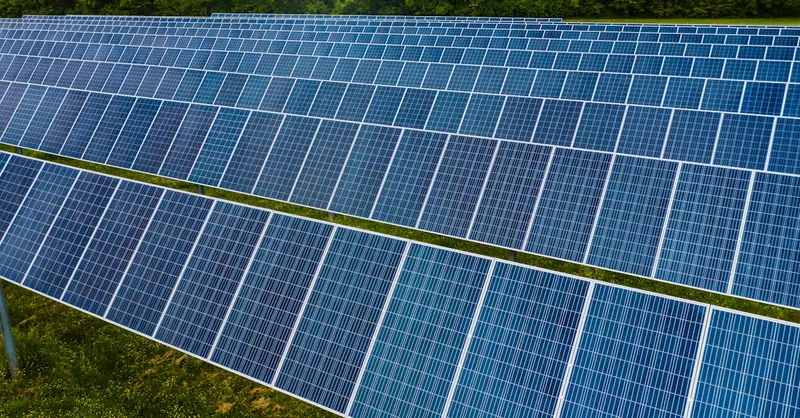
Image courtesy of Kelly
Economic and Environmental Impact Assessment of Floating Solar Farms
Evaluating the economic viability and environmental sustainability of floating solar farms is essential to understanding their role in the global renewable energy transition. From initial capital expenditure to long-term ecological benefits, their impact spans technical, financial, and environmental domains.
Cost Considerations and Lifecycle Economics
While floating solar farms generally have higher upfront capital costs compared to conventional land-based PV systems—due to specialized floats, anchoring, and waterproof electrical components—their operational and maintenance (O&M) expenses can be lower or comparable over the lifespan of 25-30 years. Key cost dynamics include:
- Installation Complexity: Water-based deployment requires marine construction techniques, increasing initial labor and equipment costs.
- Material Durability: Advanced corrosion-resistant and biofouling-mitigating materials elevate initial expenses but reduce maintenance frequency and replacement needs.
- Efficiency Gains: The natural cooling effect often leads to 5-15% higher energy yields, improving the overall return on investment (ROI) and levelized cost of electricity (LCOE).
- Land Cost Savings: Avoiding land acquisition or lease fees, especially in urban or agricultural regions, significantly offsets higher component costs.
Collectively, these factors translate into competitive LCOE values, making floating solar an economically appealing option, particularly in land-constrained markets or where land costs are prohibitive.
Lifecycle Environmental Benefits
Floating solar farms contribute positively to environmental sustainability beyond clean energy generation:
- Reduced Land Footprint: Eliminating terrestrial habitat disruption preserves biodiversity and agricultural productivity.
- Lower Water Evaporation: Studies show shading from floatovoltaics can reduce evaporation rates by up to 70%, conserving critical freshwater resources in drought-prone areas.
- Enhanced Panel Efficiency: Cooler operating temperatures lead to slower photovoltaic degradation and extend system longevity, indirectly reducing life-cycle emissions.
- Facilitation of Hybrid Systems: In combination with hydropower, floating solar maximizes renewable utilization without expanding environmental footprints.
Potential Ecological Impacts and Mitigation
Despite their benefits, floating solar farms must be carefully assessed for ecological impacts to ensure truly sustainable deployment. Potential concerns include:
- Altered Light Penetration: Extended shading under panels can affect aquatic photosynthesis and ecosystem balance.
- Water Flow Disruption: Anchors and floats may modify local currents, impacting sediment transport and nutrient cycles.
- Biofouling Effects: Accumulation of aquatic organisms on infrastructure may influence water quality and necessitate environmentally responsible cleaning protocols.
Mitigation measures involve:
- Strategic array spacing to maintain light availability,
- Environmental impact assessments (EIA) before installation,
- Use of eco-friendly anti-fouling technologies, and
- Monitoring programs to track ecosystem health over time.
Sustainability Metrics for Floating Solar
Tracking the sustainability of floating solar projects requires comprehensive performance and environmental indicators. Common metrics include:
| Metric | Description |
|---|---|
| Levelized Cost of Electricity (LCOE) | Cost per kWh over the system lifetime |
| Energy Yield Improvement (%) | Efficiency gains compared to land-based PV |
| Water Evaporation Reduction (%) | Percentage decrease in reservoir evaporation rates |
| Carbon Footprint (g CO2/kWh) | Life-cycle greenhouse gas emissions |
| Ecological Impact Score | Assessment of biodiversity and habitat changes |
Using such metrics helps investors, engineers, and policymakers gauge the true value and sustainability of floating solar installations, guiding optimal design and deployment strategies.
In conclusion, floating solar farms deliver compelling economic advantages and environmental benefits that promote sustainable energy expansion. By balancing cost considerations with ecological stewardship and leveraging robust sustainability metrics, floatovoltaics emerge as a transformative technology aligned with global clean energy and climate goals.
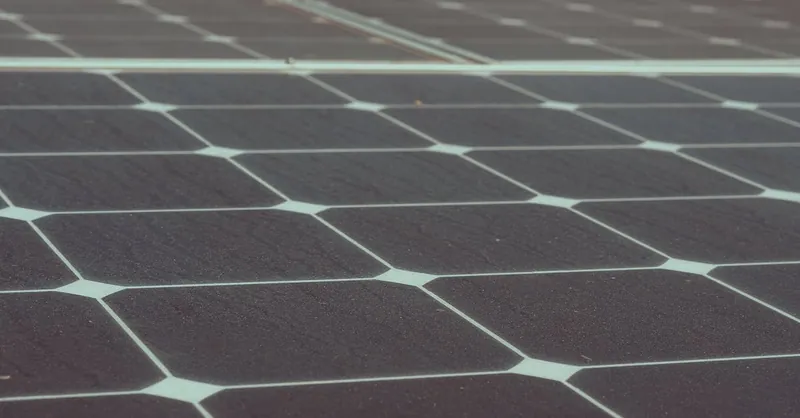
Image courtesy of Kindel Media
Recent Innovations and Future Trends in Floating Solar Farms Technology
The rapid evolution of floating solar farms is driven by continuous innovation in platform design, monitoring systems, and integration of advanced digital technologies such as Artificial Intelligence (AI) and the Internet of Things (IoT). Emerging research is reshaping how these floatovoltaic systems are engineered, managed, and optimized for maximum energy yield and longevity.
Next-Generation Floating Platform Designs
Modern floating platforms are moving beyond traditional HDPE and polymer floats toward lightweight composite materials and novel structural forms that enhance stability, modularity, and environmental compatibility. Innovative designs, such as tensioned membrane platforms and multi-layer buoyant systems, reduce wave-induced motions and allow installation in more exposed aquatic environments, including offshore locations. These advanced platforms also prioritize ease of deployment and scalability, enabling larger, more cost-effective floating solar arrays worldwide.
Smart Monitoring and Predictive Maintenance
Integration of smart sensors embedded throughout floating solar systems now enables real-time monitoring of mechanical stresses, panel performance, water quality, and biofouling levels. Using IoT connectivity, data streams are transmitted to central control units where AI algorithms analyze patterns to detect anomalies and predict maintenance needs proactively. This predictive maintenance approach reduces downtime, extends asset lifespan, and optimizes operational efficiency by targeting interventions only when necessary—significantly lowering operational costs.
AI and IoT for Operational Optimization
AI-powered management platforms are revolutionizing floating solar farm operations by enabling:
- Dynamic energy yield forecasting that accounts for environmental variables like irradiance, temperature, and water conditions.
- Automated adjustment of panel tilt and orientation using motorized mounts to maximize sunlight capture throughout the day.
- Adaptive control of anchoring tension responding to changing water currents and wave patterns improving structural stability.
- Integration with smart grids and energy storage systems for optimized energy dispatch and demand response.
IoT-enabled networks facilitate seamless communication between system components and grid operators, enhancing grid resilience and allowing floating solar farms to participate actively in energy markets.
Potential Role in Hybrid and Offshore Renewables
Looking ahead, floating solar farms are poised to synergize increasingly with offshore wind and marine energy technologies. Hybrid platforms combining solar PV with floating wind turbines or wave energy converters can leverage shared structural support, electric infrastructure, and maintenance logistics, driving down costs and maximizing renewable energy output on limited ocean space.
By embracing these cutting-edge innovations—advanced floating materials, AI-driven monitoring, IoT connectivity, and hybrid integration—floating solar farms will continue to expand their footprint within global renewable energy systems. These trends not only optimize energy generation and operational resilience but also enable the sustainable scaling of floatovoltaics in more diverse and challenging aquatic environments.
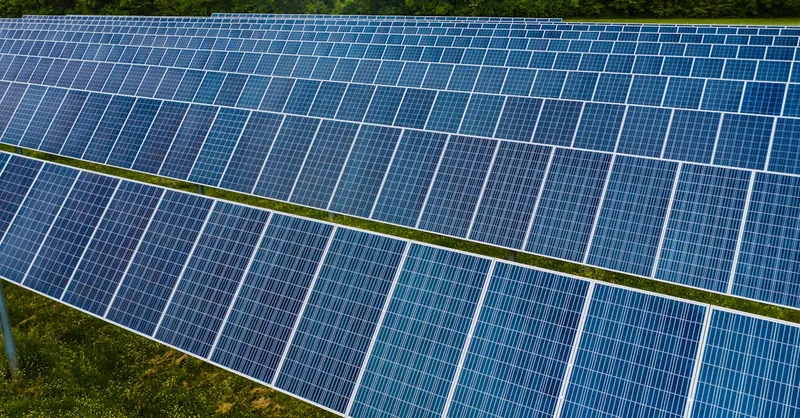
Image courtesy of Kelly
Global Case Studies and Deployment Examples of Floating Solar Farms
Floating solar technology has seen rapid adoption across diverse geographic and climatic regions, demonstrating scalable models, operational success, and valuable lessons that drive industry growth. Examining top-performing countries and regions reveals how local conditions, innovative engineering, and policy support shape floating solar's deployment and impact.
China: Leading Gigawatt-Scale Deployment and Innovation Hub
China is the global leader in floating solar capacity, leveraging its extensive water reservoirs and strong government incentives to install multiple gigawatts of floatovoltaics. Notable projects such as the 1.1 GW floating solar plant in Huainan, Anhui Province, epitomize large-scale, utility-grade installations on former mining subsidence areas transformed into reservoirs. These projects showcase:
- Massive scale-up capability, combining modular float designs and advanced anchoring suitable for large, calm inland water bodies,
- Synergies with hydropower infrastructure, using shared grid interconnections to enhance renewable energy reliability,
- Cost-optimization through local manufacturing of floats and PV modules, lowering capital expenses drastically.
China’s experience highlights the critical role of strong policy frameworks, local supply chain development, and targeted engineering solutions in enabling floating solar farms to contribute significantly to national renewable energy targets.
Japan: Pioneering Floating Solar in Limited Land Scenarios
Japan’s mountainous terrain and high population density restrict available land for solar farms, making floating solar an attractive and pragmatic option. The country pioneered some of the earliest commercial floating solar projects, including the 13.7 MW floating PV system on Yamakura Dam’s reservoir, which balances energy generation with water management goals. Key takeaways from Japan’s deployment include:
- Emphasis on environmental compatibility, minimizing ecological disruption by integrating floating solar with multipurpose reservoirs,
- Innovative modular and lightweight floats designed for seismic resilience and typhoon-prone environments,
- Community engagement and multipurpose water use, aligning floatovoltaic deployment with local aquaculture and recreation.
Japan’s success demonstrates how floating solar can flourish within constrained geographies through tailored engineering and social considerations.
India: Accelerating Renewable Capacity in Water-Sparse Regions
India is rapidly expanding its floating solar sector, focusing mostly on hydropower reservoir surfaces and water-scarce regions to simultaneously address energy and water challenges. The 50 MW Andhra Pradesh floating solar project, combined with hydropower plants, exemplifies hybrid renewable approaches enhancing grid stability and energy yield. Strategic lessons from India’s deployments include:
- Integration with rural electrification efforts to increase energy access in off-grid communities,
- Cost-effective float and anchoring designs adapted to tropical monsoon climates and seasonal water level fluctuations,
- Government policies encouraging public-private partnerships and competitive bidding for project scalability.
India’s model underscores the importance of hybrid systems and policy alignment to unlock floating solar’s potential in developing economies.
South Korea and Europe: Modular Deployments and Sustainability Focus
South Korea emphasizes modular, smaller-scale floating solar installations strategically located on urban or industrial reservoirs to optimize land use and energy output. These deployments focus heavily on:
- Advanced materials and anti-corrosion technologies to maintain longevity under humid conditions,
- System integration with local grids and smart energy management, enhancing distributed energy resource usage.
Similarly, European countries like France and the Netherlands are adopting floating solar on drinking water reservoirs and agricultural ponds, prioritizing environmental sustainability and multifunctional land-water resource management.
Together, these global case studies illustrate scalable floating solar farm models adaptable to different geographic, climatic, and socio-economic contexts. They affirm key success factors such as supportive policy frameworks, hybrid energy integration, technological innovation in floats and anchoring, and community-oriented deployment strategies—forming a rich knowledge base for future floating solar expansion worldwide.
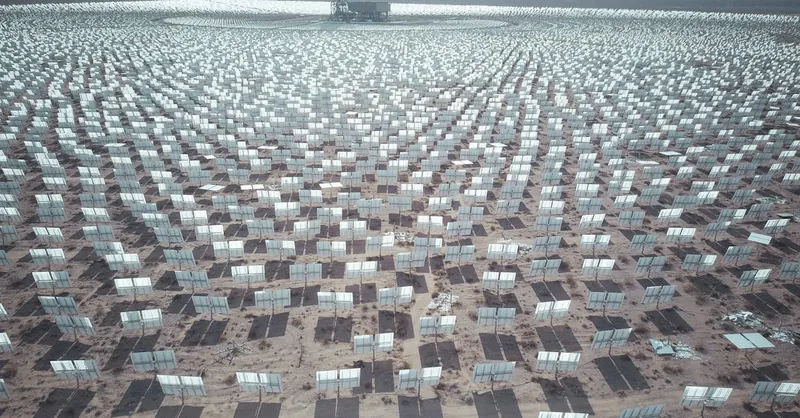
Image courtesy of Kindel Media
